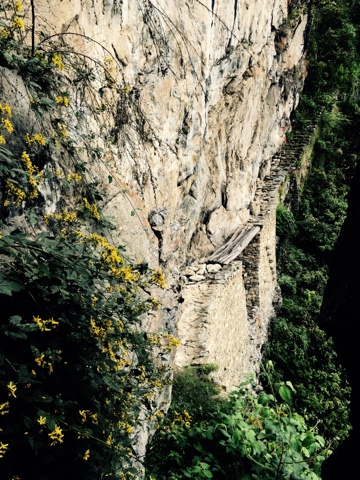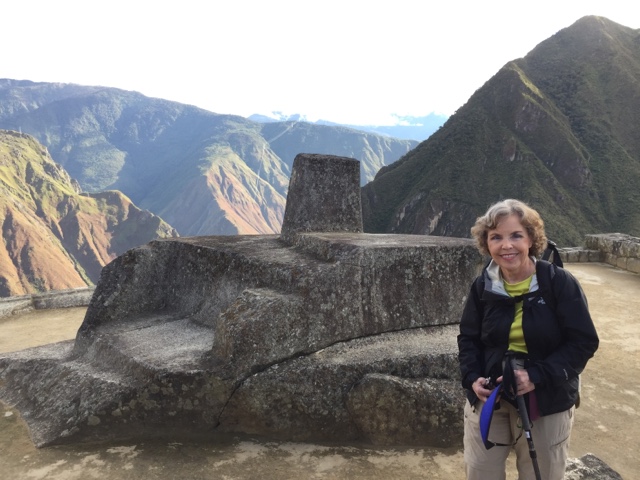Today was a hiking day for me at Machu Picchu. We were up early and on the bus around 7 am to be among the first to arrive.
We were somewhat disheartened when we saw dense fog covering the mountains, but we were happy we had seen so much yesterday.
Since this is a hiking day, my explanations will be brief, but there are lots of photos. I must warn you, we had a wonderful assistant guide who insisted I be in all the shots with great views, so if you get tired of looking at me, just skim over. This is my "once in a lifetime" experience and I want to prove I was there.
We first started out on the Inka Trail leading to Inti Punku or the Sun Gate. This was once the main entrance to Machu Picchu and is now the same trail that backpackers who hike the full trail arrive on.
The trail is very rocky with lots of stone steps. I thought it was odd that people as short as me would build steps so high. It only took us about an hour to get to the top which is at 9,000 ft. and where it was very foggy. But I did manage to get a fuzzy photo of me at the Sun Gate to prove I made it.
Since we made such good time, we decided to go to the Inka Bridge, where a trail built with impressive Inka engineering crosses a cliff face.
Along the way, the clouds cleared (hooray! how could we be so lucky!). We arrived at the guard house which sits on a promontory that overlooks the agricultural, housing and temple areas. Then we had a great view of the whole park with a different perspective of the ruins.
And then we arrived. It is a spectacular structure to see - and still there 500 years later. It was originally built as a secret entrance for the Inka army. Now you can see that the Inkas left a deep gap, which they bridged with logs that could be removed to render the trail impassable to enemies.
We left the park around noon and had a gourmet lunch at Inka Wasi Restaurant in Agua Calientes. We spent a little time shopping at the numerous craft stalls and then boarded the train for Ollantaytambo. We were met there by our trusty bus driver and we settled in for a two hour bus ride to Cusco. We arrived at our lovely hotel, the Echo Inn and had yet another gourmet meal (I had delicious trout at both and one had an anisette sauce). We were serenaded at dinner by an Andean combo. Another fabulous day!






























































